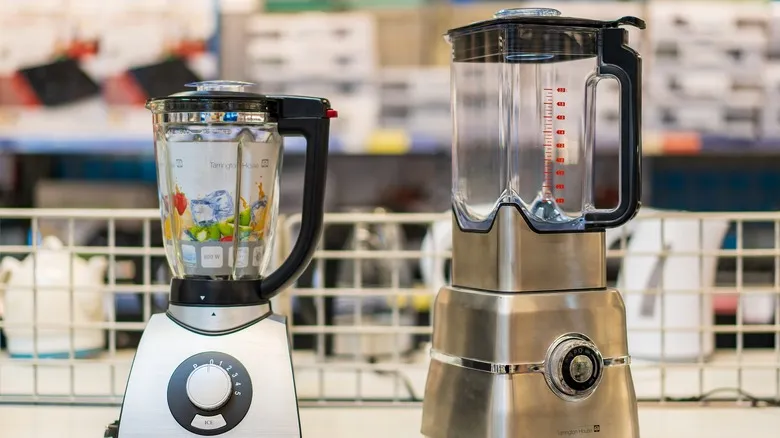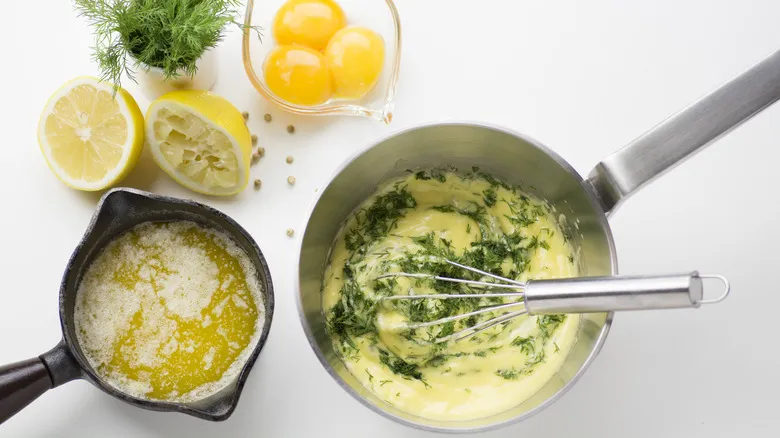Equipment tips for getting it right every time

You can utilize either a countertop blender or an immersion blender for this technique. The fundamental operation remains the same: the blades spin and create an emulsion, whether they are oriented upwards or downwards.
However, blender hollandaise will yield the best results if your appliance is appropriately sized for your batch. Countertop blenders vary widely in design, from wide, square bases to conical containers and inverted cups like the Nutribullet. If the blades of your blender do not reach the egg yolk, this method will be ineffective. If your blender is too large or the blades are positioned too high to effectively blend a single yolk, you may need to prepare a larger quantity of hollandaise.
Alternatively, you can opt for a smaller device like a handheld immersion blender. When using an immersion blender, ensure that the container you are blending in is narrow enough to snugly accommodate the blender head—once again, the blades must fully engage with the ingredients.
If the blender size is not appropriate, the sauce will not emulsify correctly. Some ingredients may be left unblended, the emulsion may be unbalanced, and it will fail to come together. Avoid disappointment by choosing the right-sized tool for the task.
Temperature tips for perfect hollandaise

Temperature plays a crucial role in the success of your hollandaise sauce. It's typically whisked in a bain-marie rather than in a bowl like vinaigrette because eggs thicken as they heat. The proteins in egg yolks start to coagulate at 149 degrees Fahrenheit, so it's essential for the yolks to get sufficiently warm. You want them to thicken, similar to a custard or pastry cream, without scrambling.
In this preparation, the hot butter cooks the eggs as it is mixed in. It's vital that the butter is hot enough to create this transformation, so avoid simply melting it and allowing it to cool. In an episode of The Food Lab, J. Kenji Lopez-Alt recommends that the butter should reach 220 degrees Fahrenheit on an instant-read thermometer. If you don’t have a thermometer, look for the mixture to be sputtering and foaming; as the temperature exceeds 212 degrees, the water begins to evaporate, creating a lively reaction.
Using room-temperature egg yolks and lemon juice can significantly aid the process, as cold eggs might lower the butter's temperature enough to prevent the yolks from thickening. Additionally, Molly from Bon Appétit's test kitchen suggests another tip: pre-warm your blender jug with hot water before you begin.
After preparing your hollandaise, be sure to pour and scrape every last bit from the blender canister and enjoy it immediately. Whatever you do, don’t let it cool down, or you’ll waste all the effort your blender put in.
Recommended

Martha Stewart's Crave-Worthy Upgrade For Tuna Salad

The Common Fish With The Highest Consumable Mercury Levels

What's The Secret Behind McDonald's 'Extra Crispy' Sprite?

Your Beer Is Brown For The Same Reason Your Steak Is Brown
Next up

